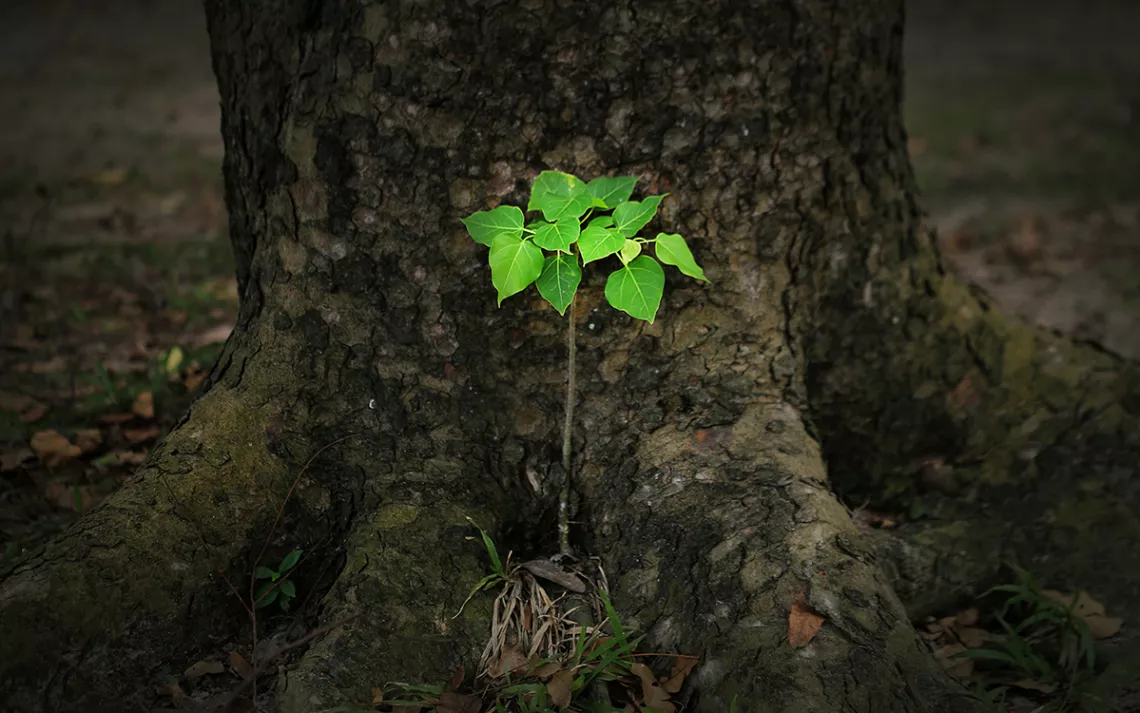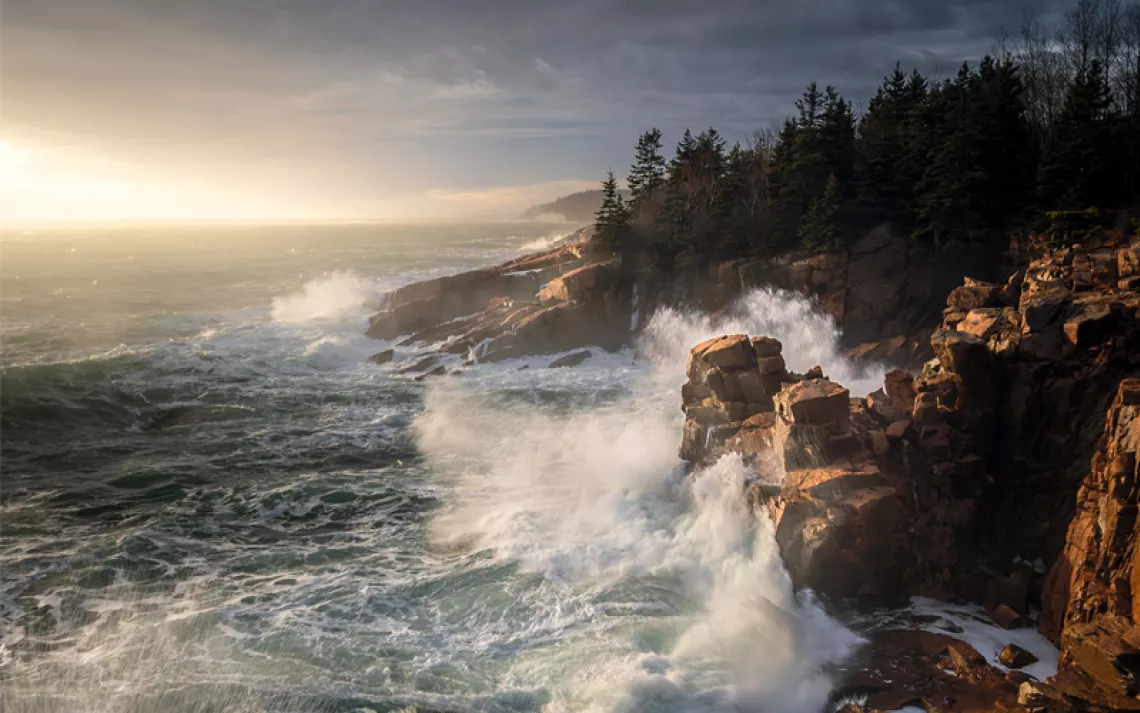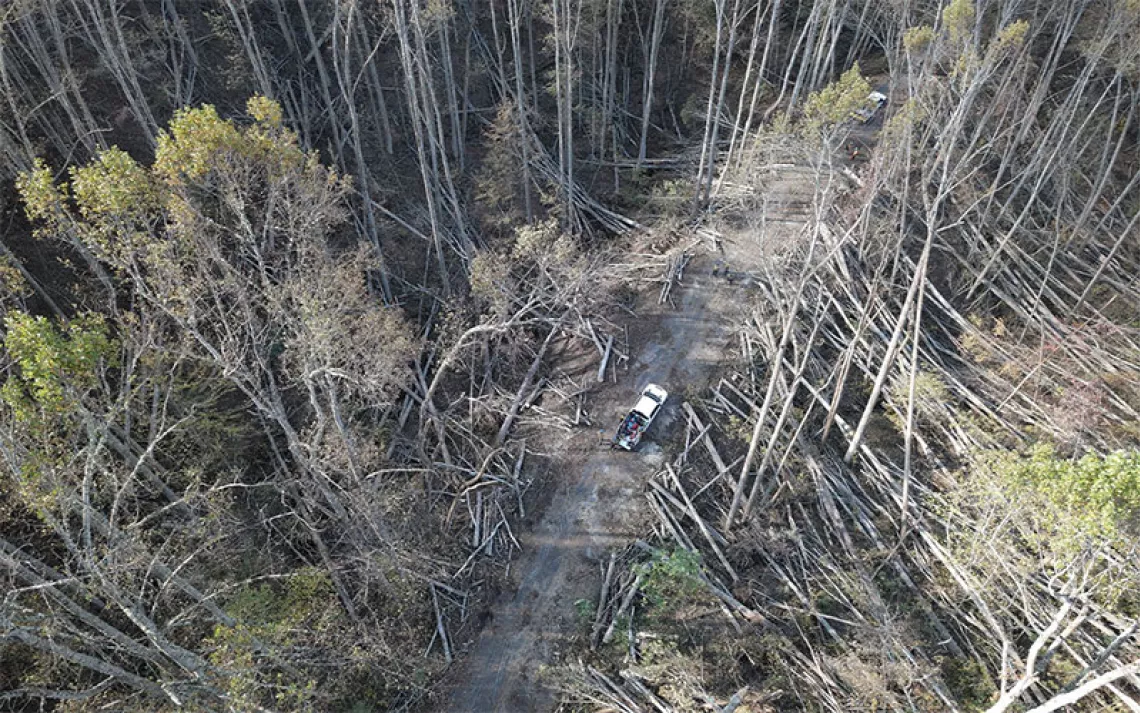Trees Alone Can’t Save Us From Climate Change
Reforestation can help sequester carbon, but it’s complicated

Photo by ThuTruong/iStock
Earlier this month, a group of European researchers published a study announcing that we already have the technology to tackle climate change: trees.
The study, published in the journal Science, identified 1.7 to 1.8 billion hectares, or roughly 6.5 million square miles, of suitable land around the world not currently being used for agriculture or urban development that could be planted as forest (defined as land with at least 10 percent tree cover).
Adding cropland and urban areas to that would create another 5.4 million square miles of forest and another 2.7 million square miles of canopy. In comparison, the total land area of the United States, including Hawaii and Alaska, is 3.5 million square miles.
The results of such a huge eco-restoration would be massive. Once mature, the study argues, those forests would sequester about two-thirds of all the carbon released by humans since the start of the Industrial Revolution, and reduce atmospheric CO2 by 25 percent. “If we act now,” Thomas Crowther of ETH Zürich, senior author of the study, says in a statement, “this could cut carbon dioxide in the atmosphere by up to 25%, to levels last seen almost a century ago.”
But other ecologists and scientists aren’t as convinced. Researchers are only now beginning to understand how carbon cycles through the life span of forests, and reforestation is a process with many technical and political variables.
Karen Holl of the University of California, Santa Cruz, who has studied reforestation in the tropics for two decades, says she supports reforestation efforts, and they do have a place in fighting climate change. But she argues that the new paper is too simplistic and grossly overestimates the potential for reforestation to reduce CO2. Holl’s research shows the amount of carbon tropical forests can hold depends on a variety of factors, including the intensity of past disturbance by humans, invasive species, and wildfires.
Holl still sees huge potential in reforestation as a way to sequester carbon. “No one is disputing that,” she explains. “The question is how much. I have a 15-year study of tropical forest recovery in southern Costa Rica, and we see a huge range in the rates of recovery, both in planted and naturally regenerating sites. We find an order of magnitude difference at least in the amount of carbon sequestered at our 12 sites across one area. Saying forests can sequester the maximum amount is overly optimistic.”
She also takes issue with the study’s map, which she says shows areas that were traditionally grassland as potential reforestation sites. Not only would that destroy habitat for species that depend on grasslands, she argues, it’s also a recipe for failure: Trying to grow forest on grassland habitat has traditionally been unsuccessful.
Attempts to reforest our way out of climate change have also resulted in questionable policies. In 2011, Germany and the International Union for Conservation of Nature launched the Bonn Challenge to reforest 150 million hectares, or 5.8 million squares miles across the globe, by 2020 and 350 million hectares by 2030. However, the 48 nations that agreed to the challenge are not on track to reach that 2020 goal. Half of the pledges so far, a recent study found, are for tree plantations, which release much of the CO2 they sequester back into the atmosphere every 10 to 20 years when the tree farms are logged. The authors of that study argue that the definition of reforestation should be tightened and only projects that allow forests to develop into their mature, diverse, carbon-capturing state be included.
The other problem with relying on reforestation to combat climate change is the timeline. Large-scale reforestation needs to occur almost immediately if it’s going to have an impact on the efforts to limit climate change to 1.5° or 2°C of warming. “[It] will take decades for new forests to mature and achieve this potential,” Crowther acknowledges. “It is vitally important that we protect the forests that exist today, pursue other climate solutions, and continue to phase out fossil fuels from our economies in order to avoid dangerous climate change.”
That’s a sentiment echoed by Holl, who points out that deforestation has actually increased in places like Brazil while palm oil plantations in Southeast Asia drive deforestation in other tropical forests. Logging in the Canadian boreal forests has also ramped up in recent years. Any carbon sequestration gained from reforestation, says Holl, is moot if we’re still losing old growth, natural forests.
Another study that came out the day before Crowther’s in the journal Science Advances argues that reforestation projects need to focus on the land that will yield the greatest rewards: namely, the tropics, where trees regrow much faster than in temperate regions and will have a quicker impact on atmospheric CO2. The Science Advances study identifies a more modest 100 million hectares of previously logged and cleared land in 15 tropical countries as a prime candidate for restoration.
But even restoring that amount of forest would take immense amounts of money, negotiations with private landowners, and lots of political will. “Restoration involves far more than simply planting trees,” ecologist and coauthor Robin Chazdon, professor emerita at the University of Connecticut, says. “It starts with the need for mutually beneficial agreements with those currently using the land and doesn’t end until forests host the rich diversity of plant and animal life that make them so awe-inspiring and valuable. But, fortunately, studies show it doesn't take long for the benefits of new forests to kick in.”
Reforestation isn’t just about putting as many trees into the ground as possible, writes Spencer Plumb, who works on reforestation issues with the National Forest Foundation, in an email about the study. His group works with silviculturists from the US Forest Service to make sure they are reforesting species in the right habitat. Currently, that organization is developing a project to plant 50 million trees in US national forests. “Tree planting needs to be done not just as a way to sequester carbon but as a way to restore forested ecosystems, which provide wildlife habitat, clean water, and recreation opportunities,” he says.
When done without proper research, reforesting using the wrong trees or methods can be disastrous. In the 1980s, the Canadian government planted spruce trees in natural peat bogs in Alberta in the hopes of increasing timber harvests. The trees grew but dried out the bogs, which had also played a role in sequestering carbon. The result was the massive 2016 Fort McMurray Fire, which burned 1.5 million acres. Pine monocultures planted in the American West have turned out to be the perfect fuel for wildfires. In China, planting of non-native tree species significantly impacted groundwater supplies; in Japan, reforestation projects involving just one tree species have led to forests that are nearly devoid of other kinds of life.
In other words, restoration is complicated. We, and the planet, would be better served by a holistic approach that restores the entire ecosystem, not just the trees, and works hard to protect the forests we do have.
“Restoring forests is a good thing,” says Holl. “It’s a good thing for carbon capture, for conserving species, for water quality. But it’s just not a silver bullet. We can’t plant our way out of the climate crisis. There are certain places, like the Amazon, where we need to do whatever we can to keep existing forests that are there. It’s so much harder to get the forests back than protect what we have.”
 The Magazine of The Sierra Club
The Magazine of The Sierra Club



